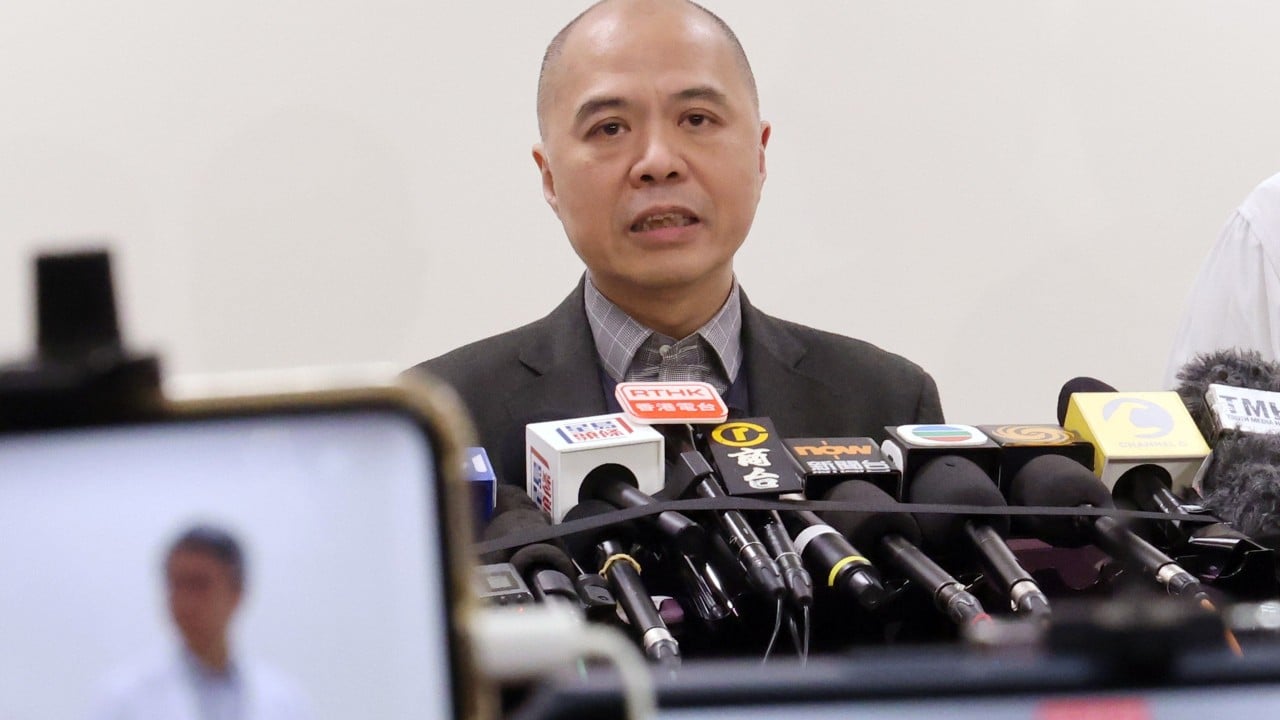A feeding tube ended up in a Hong Kong patient’s airway rather than his stomach because of a freak test result and a junior doctor’s inexperience in reading X-rays, an expert panel said on Friday.
Dr Tang Kam-shing, the chairman of the six-strong panel, said the incident happened because of a “chain of unfortunate events” that left a 61-year-old man in critical condition in intensive care after the mistake was not noticed for two days.
The panel explained that the feeding tube was inserted and a standard test used internationally as well as in the city was used to check acidity – the pH level – to make sure the tube had gone into the stomach, but that it had returned a rare false positive.
Tang said the stomach was usually acidic and the test had returned a pH level below 5.5, which meant the tube was in an acidic environment.
“The root cause analysis committee thinks this is an uncommon case of false positive result, coming from such a chain of unfortunate events,” he added.
“The nasogastric tube has gone via the left bronchus into the left pleural space, which is the space between the lung and the thoracic cage.”
He said the patient, whose limbs were paralysed, and had been on a ventilator for a long time, already had some infection in the chest when the feeding tube was inserted.
Tang, the chief executive of Kwong Wah Hospital, explained the infection had probably led to a build-up of acidic fluid in the patient’s pleural cavity.
“When the nurses were trying to verify the position [of the tube], what they aspirated out was probably from the pleural space,” he said.
“Because it [was] infected, then it [was] acidic and showing a pH value of less than 5.5 – that’s what we meant by false positive.”

Tang added the two nurses involved in inserting the feeding tube on two occasions had followed hospital guidelines.
The hospital later examined fluid drawn from the patient’s left pleural cavity and confirmed it was acidic.
He said an X-ray taken to confirm the proper positioning of the tube did not show where the end was, which should have rung alarm bells.
But Tang added the doctor who examined the image was an intern and did not have enough experience to spot the problem.
He said that a chest X-ray designed to show the position of a feeding tube would also need to include the stomach for a clearer idea of where tubes were.
The man, who remains in intensive care, was being treated in the hospital’s orthopaedic ward when he was given formula milk through the tube.
Dr Eric Cheung Fuk-chi, the hospital’s chief executive, said the intern doctor was not experienced enough, but the hospital should bear the responsibility as it was liable for supervision of staff and apologised at least twice to the patient and his family during the briefing.
He added the staff involved in the incident had been given training and assessed before they returned to clinical work.
The panel made four recommendations to prevent similar incidents.
They suggested public hospitals should expand the use of chest X-rays and carry out tests on high-risk patients, such as those with chest infection or paralysis, before they were intubated.
The panel added the supervision and training of interns in the interpretation of chest X-rays should be stepped up and the system should be improved to ensure case doctors reviewed images of high-risk patients.
Public hospitals would also need to stipulate standard specifications for X-ray scans used to confirm the position of feeding tubes.
Cheung said the Queen Elizabeth would implement the recommendations as soon as possible.


